Ginger is a spice crop grown worldwide, an indigenous plant. More than 70% of the world’s production comes from India, which exports to over 50 countries. Ginger belongs to the Zingiberaceae family. Ginger is a perennial herb with underground rhizomes and leafy shoots that reach 0.5 to 0.75 meters in height. Despite its short length, its leaves are sheathed, alternately arranged, and linear, with a length of 15 cm.
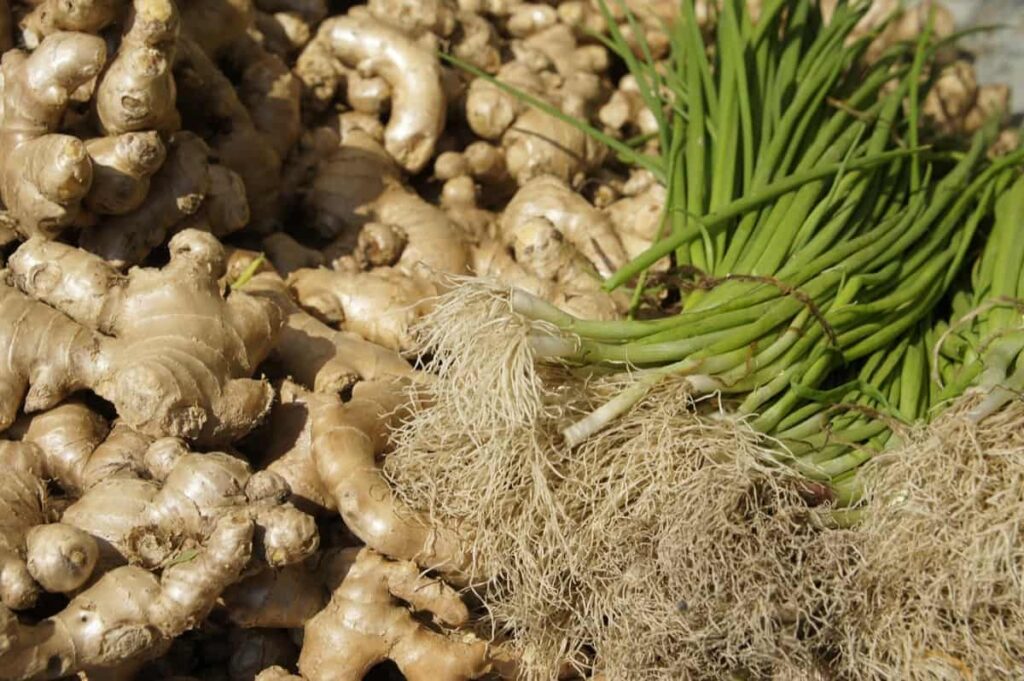
The tropical climate of mountainous regions is ideal for growing Ginger. Moreover, Ginger grown organically produces high quality, which is also in demand abroad. It is the hilly areas of the tribals in Gujarat where Ginger is ripening at the earliest stage. Gujarat has the highest organic Ginger cultivation on 10,500 acres, with 95 thousand tonnes grown in Gujarat’s central region.
Dahod has the largest area of 5350 acres in Gujarat, where 50-52 thousand tons of Ginger are harvested. Ginger is widely cultivated in Mahisagar, Panchmahal, Aravalli, Chhota Udaipur, Bharuch, and Navsari. There are also non-tribal areas such as Anand, Kheda, Vadodara, Sabarkantha, Surat, and Narmada.
How to grow Ginger organically in Gujarat
Subsidy schemes offered by the Gujarat government to support organic farming
Adoption of organic farming
Subsidy details
- The program is to be linked with certification. Certification should be done through the agency accredited by APEDA
- Unit cost: Rs. 8,000/acre
- 50% of the cost is limited to Rs. 4,000/acre.
- The maximum area of 10 acres/beneficiary
- The subsidy is given in 3 splits, first-year Rs. 2000/-, second and third-year Rs.1000/- is allotted.
Organic certification
Subsidy details
- It is a project-based program linked with certification. Certification should be done through an agency accredited by APEDA.
- For a cluster of 125 acres
- Rs. five lakhs for a cluster. The subsidy is allotted in 3 splits, including first-year Rs.1.50 lakh, second-year Rs.1.50 lakh, and third-year Rs.2.00 lakh.
In case you missed it: Key Rules to Grow Organic Mangoes in Uttarpradesh: Varieties, Cultivation Practices, and Production Management
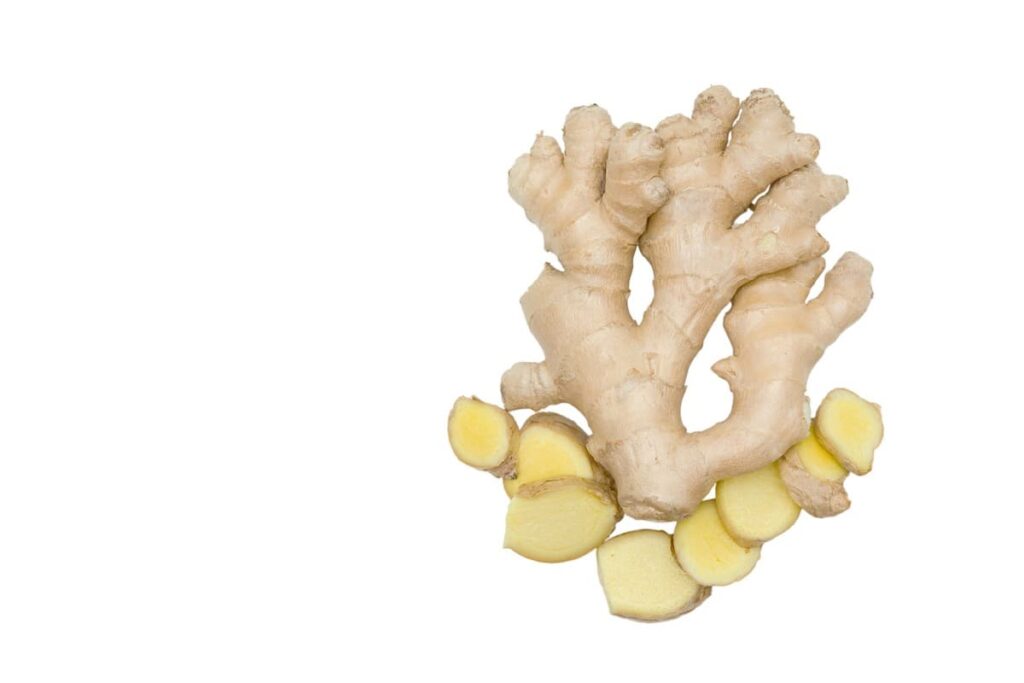
Vermicompost unit/ Organic input production
Subsidy details
It is a project-based program linked with certification. The state government will give additional subsidies to the general category, 15% and 25% for the reserved category.
| Unit cost: Rs.60000/unit For permanent structure, 50% of the cost. Structure size should be 30′ x 8′ x 2.5 | Unit cost: Rs.10000/unit For HDPE vermicompost bed, 50% of the cost. Vermin bed size should be 12′ x 4′ x 2′ & IS should be 15907:2010 |
Certification for Good Agricultural Practices (GAP), including infrastructure
Subsidy details
- Certification should be done through the agency accredited by APEDA
- The state government gives additional subsidies to the general category, 15% and 25% for the reserved category.
- Unit cost: Rs. 4,000/acre
- 50% of the cost for a maximum area of 10 acres/beneficiary
Varieties of Ginger
Several varieties of Ginger are grown in different parts of India, and they are generally named after the area where they are grown. Some notable indigenous cultivars are Maran, Kuruppampadi, Ernad, Wynad, Himachal, and Nadia. Several exotic cultivars have also become popular among growers, including Rio-de-Janeiro.
| Varieties | Green ginger yield tons/acre | maturity (days) | Dry potential yield (%) | Fiber (%) |
| IISR | 9 | 200 | 20.7 | 4.5 |
| Suprabha | 7 | 229 | 20.5 | 4.4 |
| Suruchi | 5 | 218 | 23.5 | 3.8 |
| Surabhi | 7 | 225 | 23.5 | 4 |
| Himagiri | 5 | 230 | 20.6 | 6.4 |
| IISR Mahima | 9 | 200 | 23 | 3.26 |
| IISR Regitha | 9 | 200 | 19 | 4 |
| China | 4 | 200 | 21 | 3.4 |
| Assam | 5 | 210 | 18 | 5.8 |
| Maran | 10 | 200 | 20 | 6.1 |
| Himachal | 3 | 200 | 22.1 | 3.8 |
| Nadia | 12 | 200 | 22.6 | 3.9 |
| Rio -D-Jenario | 7 | 190 | 20 | 5.6 |
In case you missed it: Growing Banana Organically in Maharashtra: Cultivation Practices and Production Management
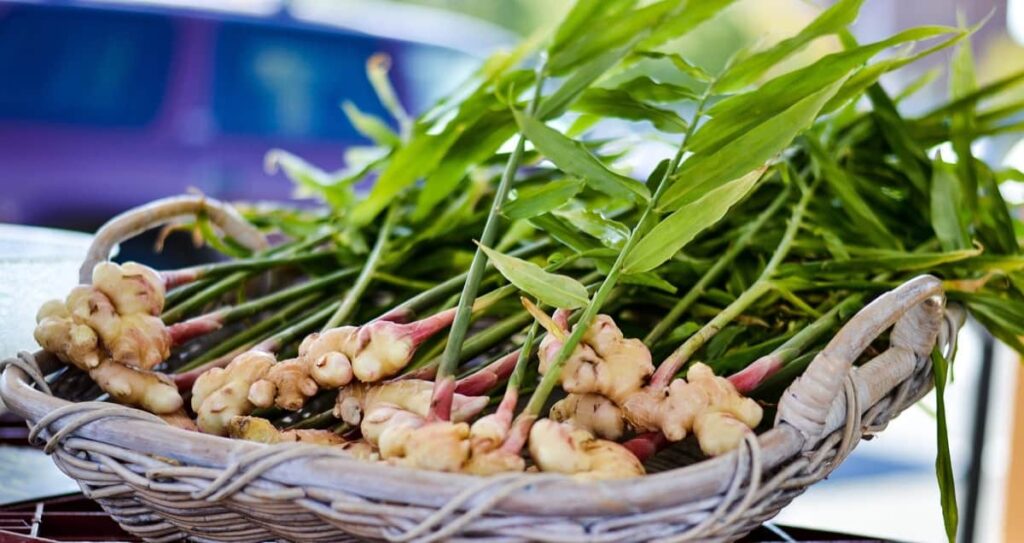
Planting season
On the West Coast of India, the best time to plant Ginger is during the first fortnight of May when pre-monsoon showers start to arrive, while in the North Eastern states, the best time to plant Ginger is during April. However, if it is planted under irrigation conditions, it can be planted well in advance and done as early as mid-February or as late as early March in most cases.
Climate for organic Ginger cultivation
Ginger grows best in climates that are warm and humid. Usually, it is grown in tropical regions, from sea level to an altitude of about 1500 meters above mean sea level, and it can be grown both under rain-fed and irrigated conditions. Ginger requires moderate rainfall during the growing season from when the rhizomes are planted till the rhizomes sprout, fairly heavy but well-distributed showers during the growth period, and dry weather for about a month before harvesting.
Soil for organic Ginger cultivation
The best soils for Ginger are well-drained loams such as sand or clay loams, red loams, or lateritic loams. It is ideal to have a friable loam rich in humus. Due to Ginger’s exhaustive nature, it may not be desirable to grow it year after year on the same site. Although it thrives under partial shade, it can also be grown in open spaces on a large scale.
Ginger can be grown organically as an intercrop or mixed crop because all the other crops are organically grown. Shade-giving plants, such as bananas, pigeon peas, tree castor, and cluster beans, can be intercropped with it. In the west coast coconut plantations, young coffee plantations, and orange plantations, Ginger is grown as a mixed crop. The intercropping of Ginger with tomato and chili occurs at higher altitudes in Himachal Pradesh.
Land preparation for Ginger cultivation
In early summer, plowing or digging the soil thoroughly is required to bring the soil to a fine tilth. An inter-space of 50 cm is provided between beds of approximately 1 m in width, 30 cm in height, and convenient length. In the case of an irrigated crop, ridges are formed 40 cm apart.
Solarizing beds for 40 days is recommended using transparent polythene sheets in areas prone to rhizome rot disease and nematode infestations. Mixtures of 10-12 tons/acre of farmyard manure and 1.6 kg/acre of Pseudomonas are spread on the beds. The root rot disease can be prevented by spreading 800 kg of neem cake powder per acre.
Planting rhizomes for Ginger cultivation
Seed rhizomes are portions of rhizomes that propagate Ginger. Small pieces of carefully preserved seed rhizomes are cut into pieces 2.5 to 5.0 cm long, weighing 20 to 25 grams, each containing one or two buds. Seed rhizomes are placed in shallow pits prepared by hand hoeing and covered with well-decomposed farm yard manure and a layer of soil. Transplants should be planted at a depth of no more than 5 cm. Sand mulch should be applied after planting. Depending on the soil, moisture will rise between 25 and 35 days after sowing.
In case you missed it: How to Fertilize Avocado Trees For Insane Fruit Set: Schedule for Natural, Organic, and Chemical Application
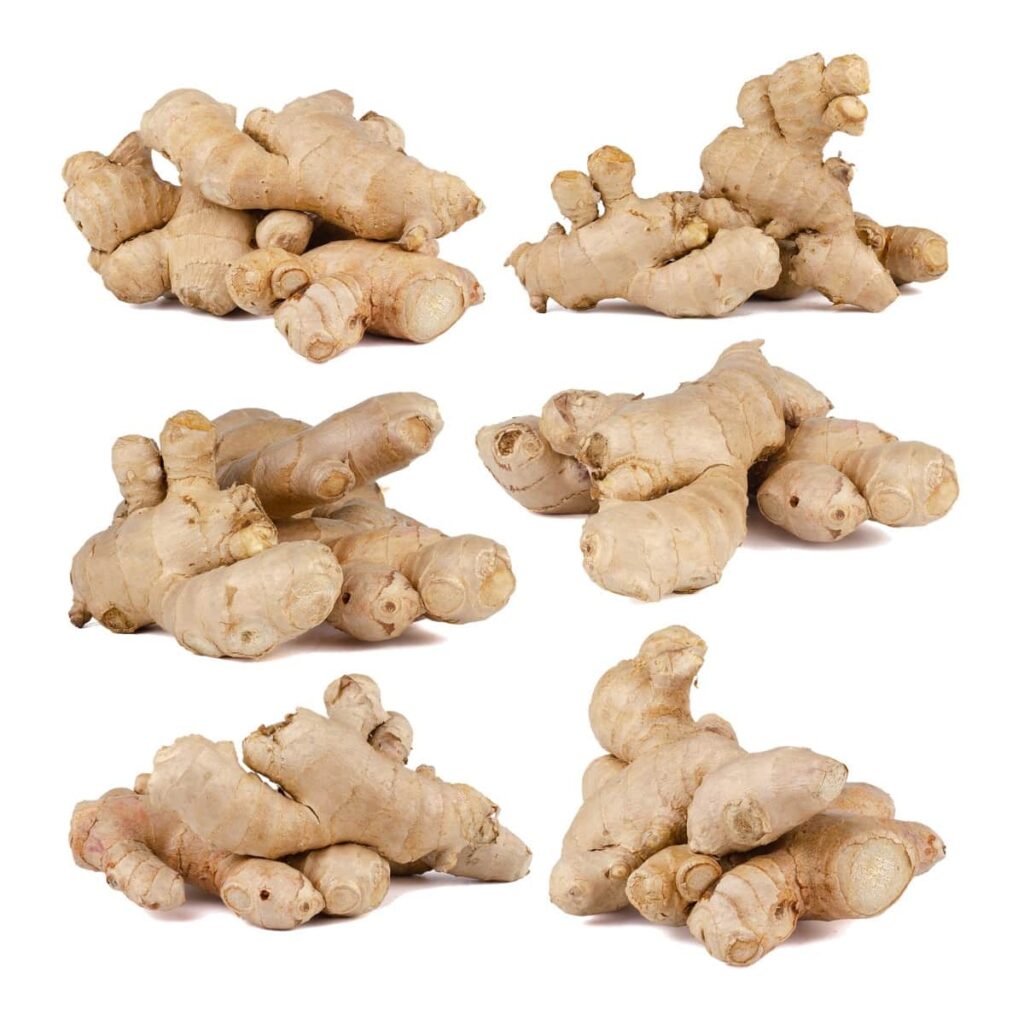
Ginger transplanting
Transplanting Ginger is not conventional, but it is profitable. Ginger is transplanted using single bud sprouts (about 5 grams) to produce quality planting material at a reduced cost. Compared to conventional planting systems, ginger transplants yield a similar yield. In this technique, transplants are raised in the pro-tray from single sprout seed rhizomes and planted in the main field after 30 – 40 days. It produces healthy planting materials, reduces seed rhizome quantities, and eventually reduces seed costs.
Irrigation requirements in Ginger cultivation
Rain-fed Ginger is grown in areas where rainfall is high (uniform distribution over 5 to 7 months). In contrast, irrigated Ginger is grown in areas where rainfall is low (uniform distribution over a longer period). During its crop cycle, Ginger requires 1300-1500 mm of water. Therefore, germination, rhizome initiation (90 days after planting), and rhizome development (135 days after planting) are critical stages for irrigation.
If conventional irrigation is used, the first irrigation should be given immediately after planting, and subsequent irrigations should be given 7 to 10 days later (depending on the prevailing weather and soil type). Sprinklers and drip systems can also achieve enhanced yields and water efficiency.
Manure application in Ginger cultivation
Plant varieties resistant to diseases, pests, and nematode infection adapted to the local soil and climate should be used for organic production. Composting, including vermicomposting, can also be used to recycle any crop residues and farm wastes available on the farm, including green loppings, grasses, cow dung slurry, poultry droppings, etc.
A 10-ton application of farmyard manure may be applied per acre, while a 1.6-ton application of vermicompost may be applied per acre. Fertility and yield will also be improved by supplementing oil cakes with neem cake (800 tons per acre), composted coir pith (2 tons per acre), and suitable microbial cultures of Azospirillum and phosphate solubilizing bacteria. Finally, phosphorus and potassium supplements may be applied based on the soil test by applying lime/dolomite, rock phosphate, and wood ash.
Foliar application of a micronutrient mixture specific to Ginger is recommended when trace element deficiencies are yield limiting. For higher yields, apply five grams/liter 60 and 90 days after planting according to standard settings or certification organizations. To effectively control the shoot borer, prune and destroy freshly infested shoots during July-August (at fortnightly intervals) and spray Neemgold 0.5% or neem oil 0.5% during September-October (at 21-day intervals).
Intercropping and crop rotation in Ginger cultivation
The practice of crop rotation is generally followed in Ginger. Among the crops typically rotated with Ginger are ragi, tapioca, paddy, gingelly, maize, and vegetables. It is, however, advisable to avoid rotations using tomatoes, potatoes, chilies, brinjal, and peanuts since these plants are hosts to the organism known as Ralstonia solanacearum, which causes wilt in plants.
In case you missed it: Growing Okra Organically in Tamil Nadu: Cultivation Practices and Production Management
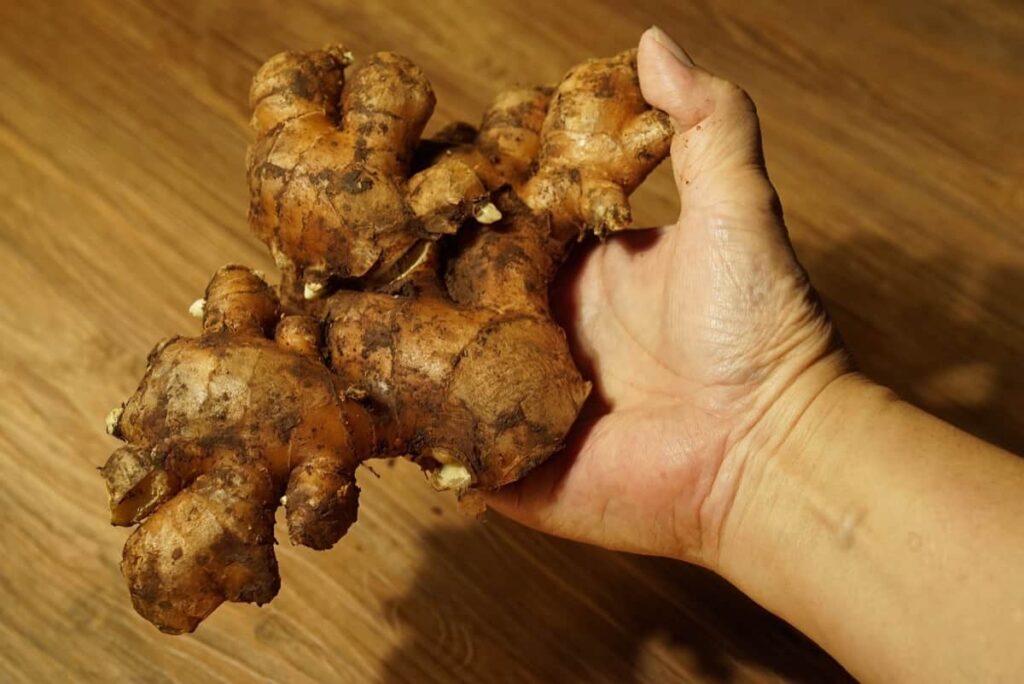
Mulching in Ginger cultivation organically
For Ginger, making the bed with green leaves is one of the most critical operations. The benefits of mulching go beyond providing organic manure to the soil. In addition to preventing soil washing, conserving soil moisture, smothering weed growth, and improving the physical properties of the soil, mulching prevents the washing of the soil. When planting, 12.5 tonnes of green leaves are mulched in the first mulching round.
After weeding and applying fertilizers, the second mulching is applied 40 days and 90 days after the first mulching, with 5 tons of green leaves per hectare immediately following the second mulching. Daincha can be grown in the interspaces of beds as soon as Ginger is planted, and they can be uprooted before the second mulching is done. After earthing up, they may be used for a second mulching after the first one.
Major pests in ginger farming
Nematodes
Damage symptoms
- These nematodes feed on tender rhizomes, roots, and pseudostems, causing stunting, chlorosis, poor tillering, and necrosis of leaves.
- Generally, roots exhibit characteristic root galls and lesions that cause rotting.
- The outer tissues of infested rhizomes are brown and water-soaked.
- Nematode infestations aggravate rhizome rot.
Organic control and management
- Intercropping of marigold
- Deep plowing
- Solarisation
- Application of neem cake before planting
The shoot borer
Damage symptoms
- The larvae that bore into pseudo stems and feed on internal tissues cause the leaves of infested pseudo stems to be yellow and dry.
- Frass is extruded from a hole in the pseudo stem, and the central shoot is withered and yellow.
- During September-October, pest populations are higher in the field. July to October is the peak time for the pest to be active.
Control and management
- Locate the borer-infested shoots. Pick out the caterpillar and destroy it by cutting open the shoot.
- Neem oil (O.5%) can be sprayed every two weeks if necessary.
- Light traps help attract and capture adult moths.
Major Diseases in Ginger farming
Soft rot or rhizome rot
Damage symptoms
- The lower leaves are first yellowed, then the upper leaves.
- Affected rhizomes show brown discoloration of rhizome tissue and rotten roots.
- A gentle pull can sometimes remove the pseudostem easily. But, as a result, the rotten parts attract other fungi, bacteria, and insects, such as the rhizome fly.
- Infected fields spread quickly to healthy ones during the rainy season.
Control and management
- Planting perennial or seasonal flowering plants (basil, marigold, sunflower, etc.) along the border enhances biocontrol agents’ population for managing pests and diseases.
- Trichoderma treatment (rhizome and soil) + neem cake.
- Soil treatment: Drench the soil with Trichoderma at 3 kg per acre.
- Seed treatment: Mix 5 grams of Trichoderma per liter of water per kilogram of the rhizome. Dip rhizomes for 15 minutes and air dry for 24 hours under shade before planting
In case you missed it: Growing Spinach Organically in Telangana: Cultivation Practices and Production Guide
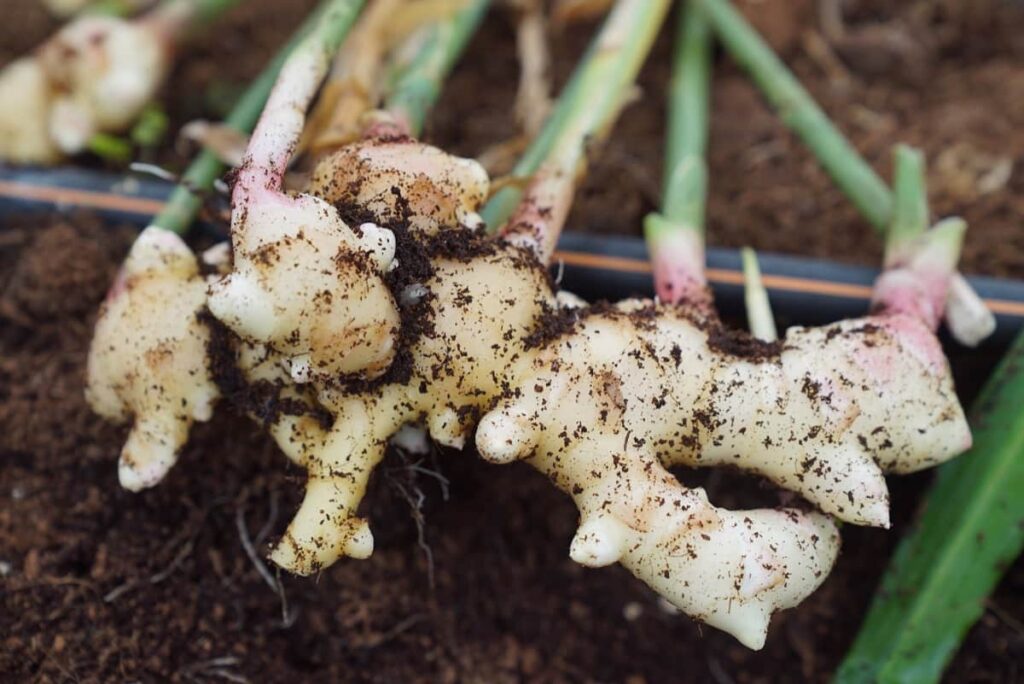
The bacterial wilt
Damage symptoms
- The symptoms can be observed between July and August, and it is the most serious disease.
- Affected plants will develop bronze leaf margins that curl backward. Eventually, the whole plant wilts and dies.
- Rhizomes and pseudostems infected with the infection emit a foul smell. Upon cutting and immersing the suspected pseudostem in clean water, milky exudates will ooze out.
- Young seedlings usually wilt during the afternoon.
Control and management
- Bacterial wilt can be managed by treating the seed rhizomes with streptocycline (200 ppm) for 30 minutes and shade drying before planting.
- If the disease is noticed in the field, a constant drenching of all the beds with a Bordeaux mixture (1 %) may be made.
Harvesting and post-harvest operations
Ginger plants are ready for harvest eight months after they are planted. When brown leaves arrive at the bottom-up drying points, they are ready for harvesting. Extracting ginger oil requires harvesting in this condition. Seed tubers are used to harvest the leaves when they are dry.
Harvested Ginger is removed from the dried leaves, roots, and tubers unearthed by the adhering soil, washed with water, and dried in the shade. In cooking, Ginger should be harvested from the fifth month after sowing since it is used as a vegetable. Ginger harvested at this stage has less alkalinity and fiber than mature Ginger.
Storage of Ginger seed rhizomes
When the crop is still green and 6-8 months old, healthy and disease-free clumps are marked in the field. Various sizes of pits are kept in sheds to store the seed. Cow dung paste can be applied to the walls of the pit. A layer of seed rhizomes is placed in pits along with sand/sawdust that has been well-dried (place one layer of seed rhizomes, then a layer of sand/sawdust 2 cm thick).
The top of the pits should have a sufficient gap for adequate aeration. It is possible to cover the pits with wooden planks with one or two openings for aeration. In about 21 days, check the seed rhizomes in the pits by removing the plank and removing faded and diseased ones.
Conclusion
Under organic conditions, farmers normally get a yield of 36–40 quintals/acre, depending on ginger cultivation practices. However, by adopting an improved ginger cultivation method, Progressive farmers get an average of Rs. 60,000 per acre (benefit-cost ratio varied from 3.50 to 3.80).
- Sheep Farming Business Plan for Beginners
- Aquaponic Farming at Home: A Step-By-Step Guide
- Profitable Village Farming Business Ideas in 2024
- High-Yield Aquaculture: Fast-Growing Fish for Farming
- Effective Fish Pond Construction Techniques for Beginners
- Irrigation and Water Management in Pineapple Farming
- Blossom to Harvest: Mastering Flowering and Pollination in Papaya Farming
- Pig Fattening Essentials: From Selection to Sale for Beginners
- Raising Wagyu Cattle: A Complete Guide for Premium Beef Production
- Soil Types and Their Water Holding Capacity
- Optimizing Irrigation Schedules for Coconut Groves for Enhanced Yield
- Espresso Your Garden: Coffee Grounds for Healthier Acid-Loving Plants
- The Best Soil Mix for Snake Plants: How to Mix Your Own Snake Plant Soil
- Green Thumb Success: Expert Tips for Cultivating Greenhouse Beans All Year Round
- Bloom All Year Round: The Ultimate Guide to Indoor Hyacinth Care
- Eco-Friendly Gardening: How to Make Liquid Fertilizer from Kitchen Waste
- Ultimate Guide to Grow Anise in Pots: Explore Seed Propagation to Harvesting
- Guide to Raising Chester White Pigs: Discover Breed Facts to Growth Management
- Mastering the Elegance: The Ultimate Guide to Weeping Cherry Tree Care, Planting, and Maintenance
- Ultimate Guide to Planting Garlic in Grow Bags: Growing Strategies for Beginners
- How to Fix Spider Plant Leaf-Related Problems: Natural and Organic Remedies
- 10 Reasons Why Your Tulsi Plant is Shedding Leaves: Home Remedies and Solutions
- Optimizing Growth and Yield: The Advantages of Palm Bunch Ash Fertilizer
- Utilizing Neem Oil Extract as a Natural Pesticide for Hydrangea
- From Soil to Harvest: Various Ways in Which Farmers Can Use AI Tools
- Steps to Encourage and Induce Citrus Flowers: A Comprehensive Guide
- How to Fix Snake Plant Leaf-Related Issues: Natural and Organic Remedies
- Transform Your Garden into a Fragrant Oasis with Raat Ki Rani (Night Blooming Jasmine)
- Discover the Ideal Chicken Breeds for Philippine Farms
- How to Create a Poultry Egg Farm Business Plan for Profits
- Grow Lemon Cucumbers Like a Pro: Insider Techniques for Bountiful Yields
- Ultimate Guide to Caring for Your Pink Princess Philodendron: Tips for Thriving Variegation
- Areca Nut Profit Per Acre: Calculating Yield and Cost of Cultivation
- How Kaveri Chicken is Becoming a More Profitable Breed in Indian Backyards
- Transform Your Barn: 9 Steps to Convert a Horse Stall into a Chicken Coop
- Exploring Suffolk Sheep Disadvantages with Limitations and Challenges
